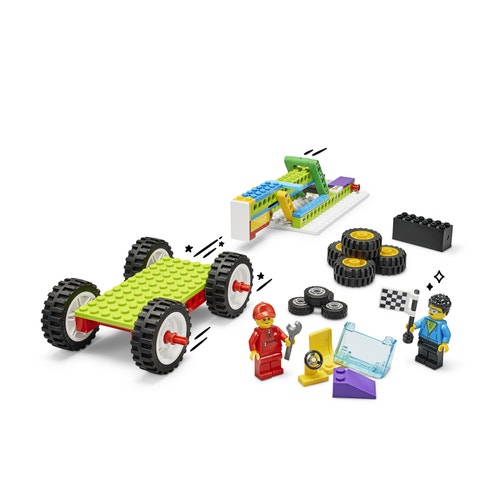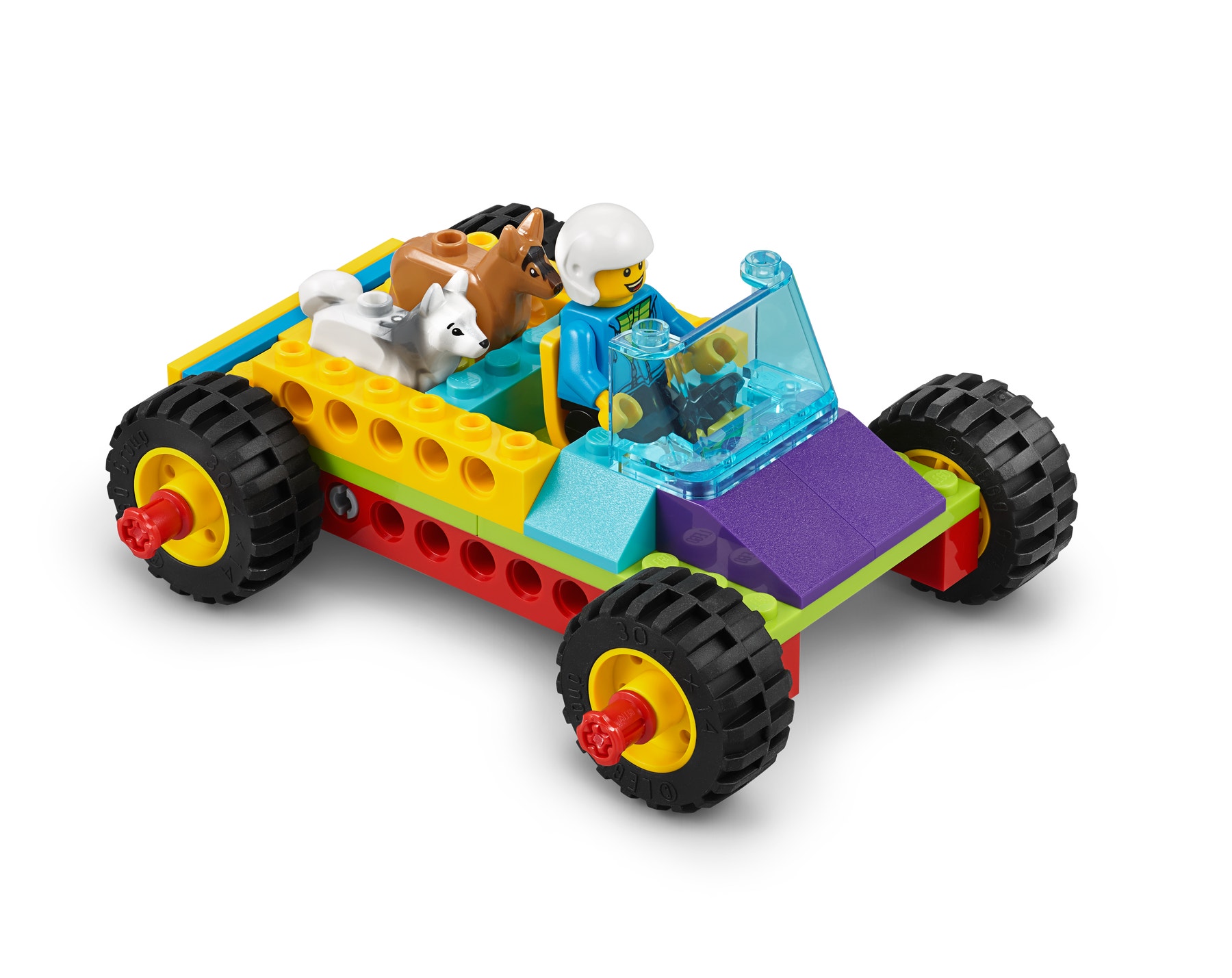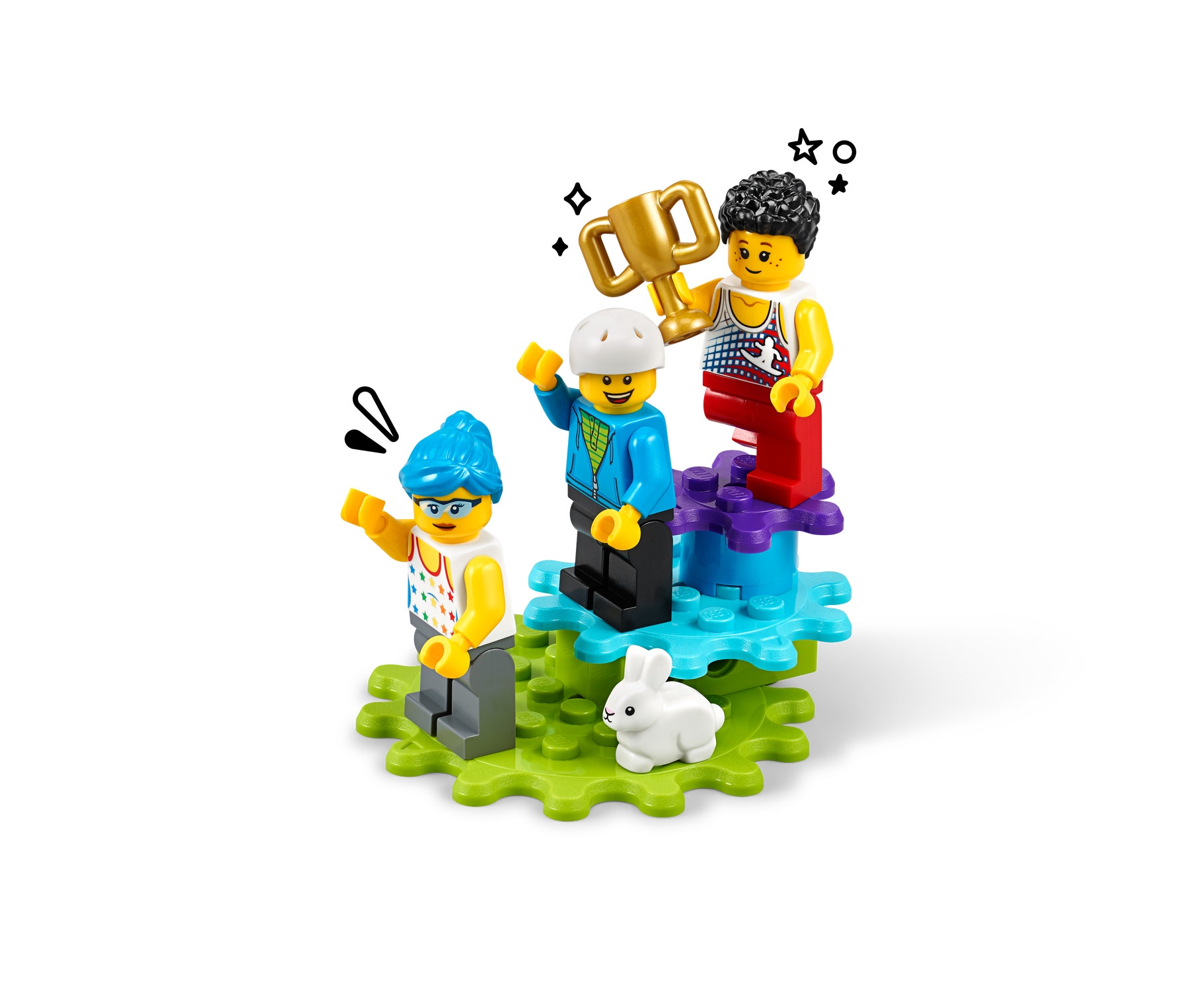Racing Car
The light changes from red to green, and off you go! Did your pit team choose the right wheels? Will your team win?

Prepare
- Review the online pupil material. Use a projector to share this material with your pupils during the lesson.
- Make sure that you have covered ways of recognising patterns in motion in an earlier lesson.
- Consider the abilities and backgrounds of all your pupils. Differentiate the lesson to make it accessible to everyone. See the Differentiation section below for suggestions.
Engage
(Whole Class, 5 Minutes)
- Watch the pupil video here or access it via the online pupil material.

- Facilitate a quick discussion about which forces the pupils have seen in action as they watched the car race in the video.
- Ask questions like these:
- Which force makes a racing car move? (The reaction force or thrust acts on the car's wheels to make them move. This comes from the motor or something else that's pushing the car forward.)
- Which force makes the racing car stop? (The force of friction takes energy away from the car to slow it down as it rolls on its wheels. This is called ‘rolling resistance’.)
- What can make the car go faster or slower? (Reducing mass and surface friction will help make the car go faster. Increasing mass and surface friction will slow it down.)
- Tell the pupils that they are going to build a racing car model and a launcher, and then experiment to recognise a pattern in the car's motion.
- Distribute a set to each group.
Explore
(Small Groups, 25 Minutes)
- Have the pupils work in pairs to build the Racing Car model. Tell them to take turns, one partner searching for the bricks while the other builds, switching roles after each step has been done.
- You can find building help in the Tips section below.
Experiment 1:
- Have the pupils test their cars with the medium-sized yellow wheels to see how far they will travel. Tell them to pull back the launcher to position 5 and then let it go.
- Ask them to record the result on their Student Worksheets (Teacher Support – Additional Resources).
Experiment 2:
- Now ask the pupils to test their cars with the small grey wheels and the large white wheels.
- Remind them to record the results of each test.
- As they test and record their observations, encourage them to place a brick beside the track to predict how far they think each car will go.
Explain
(Whole Class, 10 Minutes)
- Gather your pupils together to share what they have learned.
- Ask questions like these:
- What did you observe when you tried the different wheels? (The smaller wheels travelled less distance than the larger wheels. This is because the smaller wheels rotate faster on the axle than the bigger wheels, which creates more friction).
- How can you make your car go as far as possible? (Answers should include pulling the spring all the way back, reducing weight, using the larger wheels and launching the car on a smoother surface.)
Elaborate
(Whole Class, 5 Minutes)
- Gather your pupils together to review and discuss their experiments.
- Ask questions like these:
- What patterns did you recognise in your car's motion when you changed the size of the wheels?
- Were you able to predict what would happen next?
- Once they have tested each of the wheel sizes, have the pupils customise their cars using the remaining bricks from the set.
- Allow time for the pupils to disassemble their models, sort the bricks back into the trays and tidy up their workstations.

Evaluate
(Ongoing Throughout the Lesson)
- Ask guiding questions to encourage them to ‘think aloud’ and explain their thought processes and reasoning in the problem-solving decisions they have made when building their models.
Observation Checklist
- Measure your pupils’ proficiency in describing the pattern in the motion of an object and how this pattern can be used to predict its future motion.
- Establish a scale that suits your needs. For example:
- Requires additional support
- Can work independently
- Can teach others
Self-Assessment
- Have each pupil choose the brick that they feel best represents their performance.
- Green: I think I can recognise a pattern in the car's motion.
- Blue: I know I can recognise a pattern in the car's motion.
- Purple: I can recognise a pattern in the car's motion and use this pattern to predict its future motion. I can also help a friend to understand.
Peer Feedback
- In their teams, have the pupils discuss their experiences working together.
- Encourage them to use statements like these:
- I liked it when you…
- I'd like to hear more about how you…

Tips
Model Tips
- Show your pupils how to count the studs on the plates to help them place the bricks correctly. Point out that they should pay attention to the position of the numbered tile and marker on the launcher.
- To launch the car, the pupils must pull the launcher back to position ‘5’, place the car against the flat pushing plate and then let go.
- Tell the pupils to take care not to squeeze the wheels on too tightly because the extra friction will slow the car down.
Differentiation
Simplify this lesson by:
- Having your pupils try only the medium-sized yellow wheels and large white wheels
Increase the difficulty by:
- Having the pupils add a weighted brick to see if it changes their car’s behaviour
- Having the pupils try pulling only halfway back on the launcher (position ‘3’) when launching their cars
- Can they predict where the car will stop based on their observations in experiments 1 and 2?
Extensions
(Note: This will require additional time.)
To incorporate the development of maths skills, have your pupils use standard units to estimate and then measure the masses of objects from the set (e.g. weighted brick 53 g, big wheels 16 g, medium wheels 6 g).
National Curriculum Maths: Ma3/3.1 Measurement
Teacher Support
The pupils will:
- Customise a race car to explore different variables, like mass and rolling resistance, to see whose car can go the farthest
- Record data and use it to make predictions and recognise patterns
- LEGO® Education BricQ Motion Essential Sets (one for every two pupils)
- Measuring Tape (one per group)
National Curriculum
Sc3/4.2a
Compare how things move on different surfaces
Sc4/1.1
Asking relevant questions and using different types of scientific enquiries to answer them
Sc4/1.2
Setting up simple practical enquiries, comparative and fair tests
Sc4/1.4
Gathering, recording, classifying and presenting data in a variety of ways to help in answering questions
Sc4/1.6
Reporting on findings from enquiries, including oral and written explanations, displays or presentations of results and conclusions
Ma3/3.1a
Measure, compare, add and subtract: lengths (m/cm/mm)
Ma3/4.1a
Interpret and present data using bar charts, pictograms and tables
DT2/1.1a
Use research and develop design criteria to inform the design of innovative, functional, appealing products that are fit for purpose, aimed at particular individuals or groups




